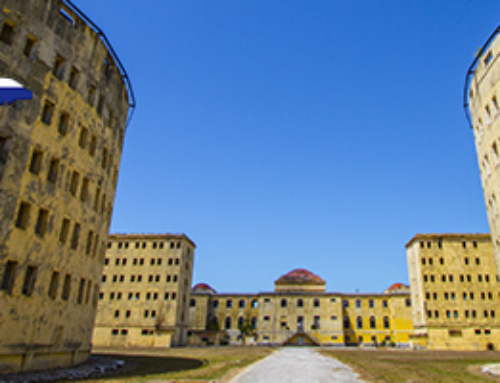The National Shrine Basilica of Our Lady of Charity of El Cobre (Virgen de la Caridad de Cobre) is a sacred site in Cuba. It is situated in close proximity to the second largest city in Cuba – Santiago de Cuba. The image of Our Lady of Charity of El Cobre is an object of worship by all Cubans regardless of their religion. On the 8th of September, Our Lady’s date of birth, the whole country pays tribute to its Patroness by decorating Her image with sunflower wreaths and bouquets.
The word “cobre” in Spanish means “copper” and has become associated with Our Lady of Charity of El Cobre because of the abundant extraction of copper ore in the region.
An interesting fact is that the most widely practiced religions in Cuba are Catholicism and Santeria. Our Lady is worshiped by both – Catholics and Santerists, although Catholicism is spread in Cuba with the arrival of Christopher Columbus, while Santeria is a mix between Christianity and African beliefs. The slaves that were forcefully brought to Cuba mainly from Nigeria and the neighbouring countries were baptized by the Spanish conquistadors. The new inhabitants on the island, however, secretly continued to practice their native religion Yoruba and therefore with the time Christianity and Yoruba became naturally combined into a united religion called Santeria.
The Catholics in Cuba worship Out Lady of Cobre, while the Santerists look up to Her as Ochun – the goddess of love, money, and sweet water, which is so vital in Cuba. Here the yellow colour is a symbol of feminity and therefore the followers of both religions use sunflowers when they want to pay respect to one’s Patroness.
A legend about Our Lady of Charity of El Cobre has it that in 1612 three children – two Indian boys and one Afro-American, boarded a small wooden boat in the Nipe Bay next to Cayo Saetia in search for salt. The boat started to sink when suddenly the boys saw light coming out from that image of Our Lady that they carried with them. А tropical storm began, but Our Lady guarded the children through the waves all the way to the shore. When they laid aboard, they are stunned – not only are they alive after such a harsh storm, but their clothes were dry as well. Later the image of Our Lady was transported to Real de Minas near Santiago de Cuba. Eventually, the image of Our Lady became associated with the word “cobre” because of the copper ore, extracted in the region. In 1648 a special chapel for the image was built. In 1868 the Father of the Cuban nation Carlos Manuel des Cespedes freed the slaves and started a rebellion against the Spanish rule. He prayed for his mission to the Patroness of Cuba. Later, during the Ten Years’ War of the Cubans against the Spanish conquistadors, Our Lady of El Cobre was announced for the patroness protector of the “mambas” – the men who fought against the organized Spanish army.
On the 8th of September 1927 the Basilica of Our Lady of Charity in El Cobre was sanctified and became the heart of the Cuban nation.










